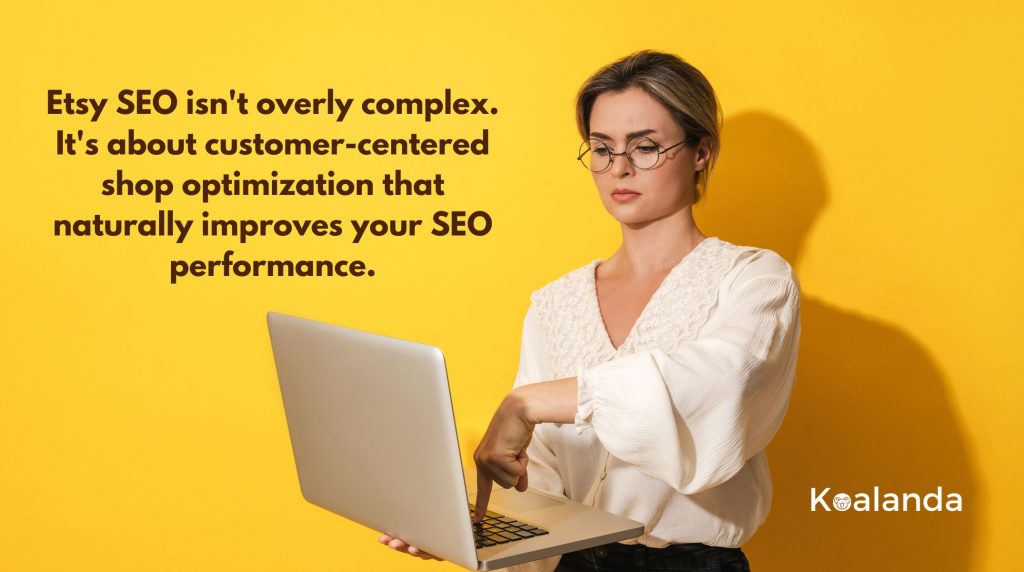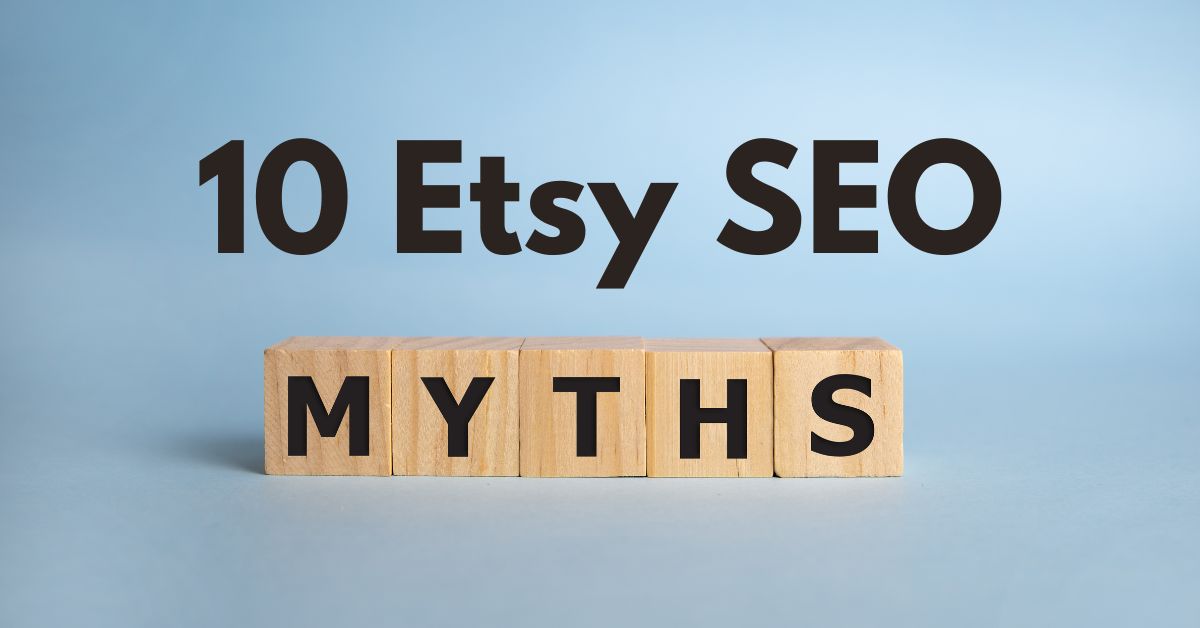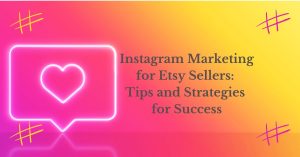Untangling Etsy SEO can feel like a challenge, especially with a swarm of myths buzzing around on the internet and social media. These myths can easily lead sellers astray, muddling their SEO strategies. So, let’s clear the air. In this post, we’ll debunk ten common Etsy SEO myths and set the record straight. Ready for some Etsy SEO myth-busting? Let’s dive in!
Table of Contents
Myth 1: SEO is hard and technical
It’s a common misconception that Etsy SEO (Search Engine Optimization) is a challenging and technical domain. In reality, the essence of SEO is enhancing user experience and providing high-quality content. It’s less about outsmarting Etsy’s algorithm and more about making your shop more appealing and accessible to customers.
Consider the three examples below:
Accurate Tags: Utilizing accurate tags is vital as it helps guide the right customers to your products. The goal is not just to attract any traffic, but to attract potential customers who have a genuine interest in your offerings. This improves the shopping experience by connecting customers with the products they desire.
Quality Photos: High-quality photos make your shop appear more professional and appealing. They help customers to better understand your products, offering a detailed view that allows them to visualize and appreciate the product better. This adds a significant value to the user experience, increasing the likelihood of successful transactions.
Complete Policies: Comprehensive and clear policies foster trust between you and your customers. They make your shop more transparent and reliable, which can decrease the likelihood of disputes or open cases. This indirectly contributes to better SEO as it makes your shop more user-friendly and trustworthy.

To sum up, Etsy SEO might have its technical aspects, but it’s far from being inaccessible or overly complicated. It’s about fine-tuning your shop with the customer in mind, which in turn naturally boosts your search ranking. Moreover, leveraging SEO tools like Koalanda can streamline and enhance the SEO optimization journey.
Myth 2: You can compensate for bad SEO with paid ads
While paid ads can definitely boost your store’s visibility, they are not a magic bullet for poor SEO. Etsy ads can help bring more visitors to your shop, but without proper SEO, these visitors might not find what they’re looking for or convert into buyers.
Think of SEO as the foundation of your shop. It ensures your products are properly categorized, your descriptions are clear, and your tags match user searches. Without this, even the most extensive ad campaign may fall flat as visitors leave unsatisfied due to difficulty finding the right products or understanding your offerings.
So, investing in Etsy SEO is essential. It optimizes your shop for both organic traffic and paid visits, ensuring a user-friendly experience that can convert visitors into customers, fostering long-term success.
Myth 3: Keyword stuffing helps improve ranking
A widespread myth in the Etsy community is that keyword stuffing, or cramming as many keywords into your listings as possible, improves your ranking. Not only is this untrue, but it can also negatively impact your store’s visibility and conversion rates.
Keyword stuffing often leads sellers to incorporate irrelevant or loosely related keywords, under the assumption that more is better. However, this can make your titles and descriptions confusing to potential buyers. As they struggle to understand what exactly you’re selling, your conversion rates may suffer. Since the conversion rate is a very important factor for Etsy’s algorithm, this may lead to a worse search ranking.
The best practice is to use keywords strategically, focusing on relevance and clarity. This enhances user experience, potentially boosting your conversion rates and, consequently, your SEO performance.
Myth 4: Your SEO must be perfect to be successful
The belief that your SEO needs to be flawless to achieve success on Etsy is a common misconception. In reality, SEO is an ongoing process, and while it’s crucial for your shop’s visibility, perfection is not a prerequisite for success.
SEO involves various elements such as keyword research, listing optimization, and more. While these are all important, they don’t have to be executed perfectly to make a difference. Small, consistent improvements can significantly enhance your shop’s SEO over time.
Remember, Etsy’s goal is to connect shoppers with the products they’re looking for, not to reward perfect SEO tactics. If you focus on providing high-quality, relevant listings that meet the needs of your customers, you’re already on the right track.
Myth 5: More listings means more visibility
A common question among many Etsy sellers is: “What is the ideal number of listings to start selling successfully on Etsy?” While it might seem that more listings automatically translate to greater visibility, this isn’t necessarily the case. It’s not just about quantity; the quality of each listing is equally, if not more, important.
Every listing should be thoughtfully created and SEO-optimized, complete with appropriate keywords, detailed descriptions, and high-quality images. Merely increasing the volume of listings without prioritizing their quality and relevance can lead to a cluttered and confusing shop, discouraging potential customers.
Rather than merely aiming for a high number of listings, focus on creating a thoughtful selection of well-optimized, impactful products. A diverse yet carefully curated product assortment, underpinned by robust Etsy SEO strategies, enhances your shop’s user experience, potentially leading to increased visibility and higher conversion rates.
Myth 6: Etsy favors large, established shops in search results
A common belief circulating the internet is that Etsy gives preferential treatment to larger, established shops. We explored this topic in detail in our comparison of small vs big Etsy shops. And our findings tell a different story – Etsy actually leans towards smaller shops!
Etsy’s priority is to match buyers with relevant products, regardless of shop size or tenure. The algorithm weighs factors like relevancy, listing quality, and customer experience. Shop size and history play a minor role. Therefore, even new or smaller shops with optimized listings and superior customer service can compete effectively with larger ones. Success on Etsy relies more on these quality factors than on shop size or age.
Myth 7: Participating in favoriting games can boost ranking
In the early days of Etsy, “favoriting games,” where sellers mutually favorite each other’s items to enhance visibility, was a tactic some sellers used with success. However, times have changed, and this strategy is no longer effective or recommended.
Over the years, Etsy’s algorithm has evolved significantly. It now includes advanced personalization features and places a greater emphasis on genuine engagement and conversion rates. Artificially inflated favorites from favoriting games can easily be detected and do not contribute to genuine engagement or conversion.
Moreover, participating in such games is now against Etsy’s policies. Engaging in these tactics can put your shop at risk of penalties.
Myth 8: Etsy SEO and Google SEO are the same
It often comes as a surprise that Etsy SEO differs fundamentally from SEO practices on Google, Amazon, or eBay. In fact, each of these platforms operates its own unique search engine, valuing distinct factors based on their specific user needs and behaviors.
Take Google, for instance, which places high importance on backlinks, internal links, and mobile-friendliness. These are not factors that Etsy’s search algorithm considers. In fact, a majority of Google’s SEO techniques are not even applicable within the context of Etsy.
Therefore, when seeking to enhance your Etsy shop’s search ranking, it’s essential to focus on resources specifically tailored for Etsy SEO. Doing so ensures that your efforts are targeted and effective, rather than spent on strategies that may not yield results for your Etsy store.
Myth 9: Etsy rotates traffic between shops
A widely held belief among sellers is that Etsy rotates traffic among shops, artificially boosting or lowering the ranking of shops on a rotational basis. There is no real evidence for this but rather only anecdotal ones.
Etsy’s algorithm focuses on delivering relevant and high-quality results based on users’ search queries. Sellers can increase visibility and sales by optimizing listings and prioritizing customer service, rather than relying on a hypothetical rotation system.
Myth 10: Constantly renewing your listings is a successful SEO strategy
There was a time when frequently renewing your listings was a successful SEO strategy on Etsy. It improved visibility and ranking, leading to more sales.
However, Etsy’s algorithm has evolved considerably since then. It now takes into account numerous factors, and while the recency of listings still matters, its importance has diminished compared to other aspects.
Moreover, each listing renewal comes with a fee of $0.20. While this may be a worthwhile investment in very specific niches, for most sellers, the cost of constant renewals no longer makes financial sense.
Therefore, the idea that frequently renewing your listings is a guaranteed route to Etsy success has become outdated. Nowadays, a well-rounded and considered SEO approach is more likely to yield fruitful results.
Conclusion
In the ever-evolving world of Etsy SEO, it’s crucial to remember: don’t believe everything you read online. Misconceptions abound, and what you don’t know can indeed hurt your shop’s visibility and sales. So, aim to build your SEO strategy on solid facts and reliable information. In doing so you’ll clear a path to true Etsy success. Stay curious, stay informed, and continue refining your approach for better SEO outcomes.





